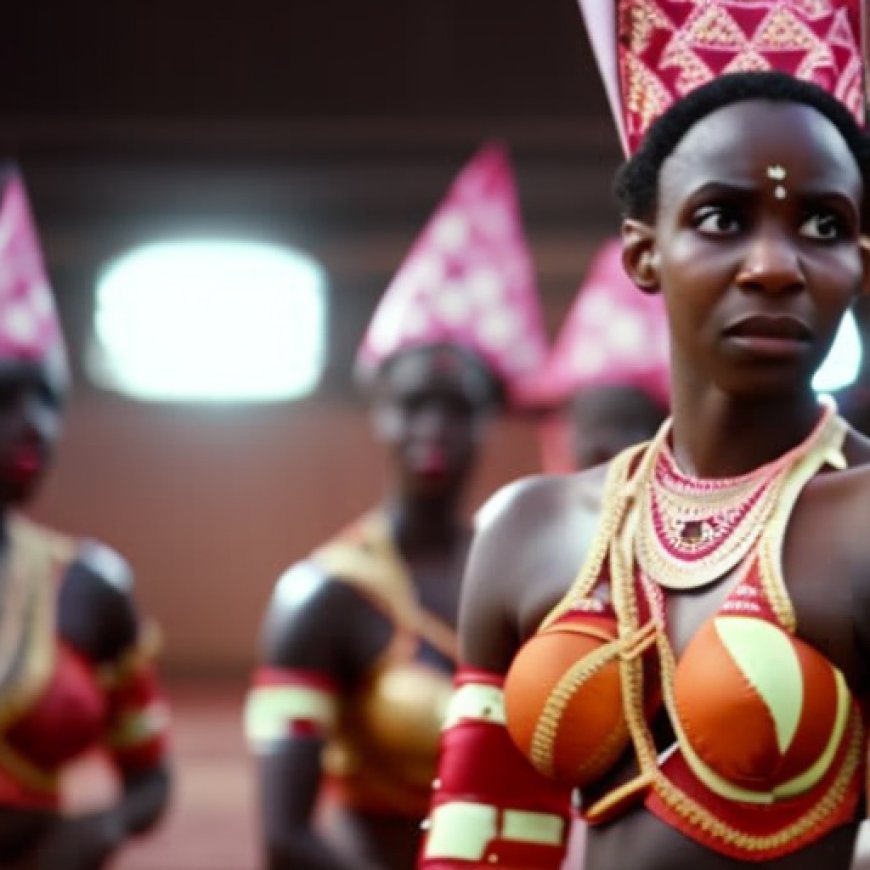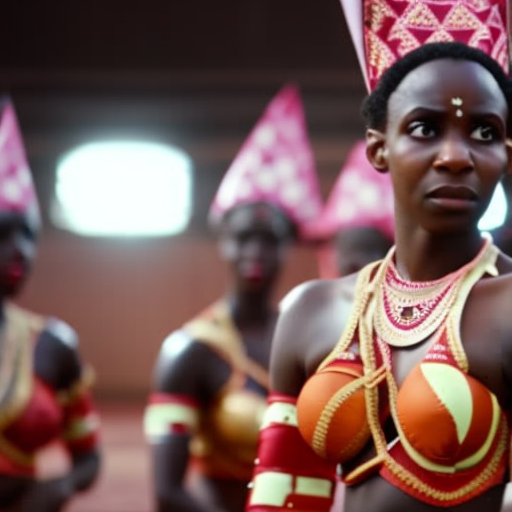Video documents female genital mutilation camp in Guinea
Video documents female genital mutilation camp in Guinea The France 24 Observers


The Fight Against Female Genital Mutilation in Guinea
Introduction
The following report highlights the issue of female genital mutilation (FGM) in Guinea and the efforts being made to combat this harmful practice. The report focuses on a recently surfaced video that sheds light on the existence of a “camp for genital mutilation” in Conakry, Guinea. Despite the ban on FGM in Guinea, it continues to be widely practiced. This report emphasizes the importance of addressing FGM in the context of the Sustainable Development Goals (SDGs).
Video Exposes “Camp for Genital Mutilation”
The video, which was posted on TikTok, depicts four young girls sitting on the ground, with one of them visibly crying and in pain. Two adult women, one of them elderly, can also be seen in the video. The text in French on the screen reads, “My mother worked hard this morning.” The video has sparked outrage and activism among concerned individuals, including FGM prevention advocates.
Investigation and Arrests
Following the release of the video, authorities in Guinea have launched an investigation into the matter. One person has been arrested, and efforts are underway to locate other suspects involved in the camp for genital mutilation.
The Significance of the Sustainable Development Goals (SDGs)
The fight against FGM aligns with several SDGs, including:
- Goal 3: Good Health and Well-being – FGM poses significant health risks to girls and women, including physical and psychological consequences.
- Goal 5: Gender Equality – FGM is a violation of women’s and girls’ rights and perpetuates gender inequality.
- Goal 10: Reduced Inequalities – FGM disproportionately affects marginalized communities and perpetuates social inequalities.
- Goal 16: Peace, Justice, and Strong Institutions – Addressing FGM requires legal measures, investigations, and prosecutions to ensure justice for survivors.
Witness Testimonies
Individuals who have seen the video have come forward to report it and share their personal experiences:
- Fafoune Konaté, a popular TikTok user in Guinea, reposted an excerpt of the video on her account, expressing her shock and trauma as a survivor of FGM.
- An anonymous Guinean living in France shared the video on Snapchat, triggering discussions among young mothers about the practice of FGM.
Confirmation of a “Camp for Genital Mutilation”
Kadiatou Konaté, the president of the Club of Young Women Leaders in Guinea, confirms that the video was filmed in a camp for genital mutilation. The girls’ clothing and the way they are lined up on the floor are consistent with the practices observed in such camps. These camps are often held during vacations, where girls undergo the mutilation process together.
Challenges and Reasons for FGM
Ending FGM faces several challenges, including cultural and traditional beliefs, economic incentives for those who perform the practice, notions of dignity and honor, and patriarchal control over female sexuality. Some individuals believe that FGM reduces the risk of teen pregnancies or increases marital prospects. It is crucial to educate parents about alternative ways to preserve traditional values without resorting to genital mutilation.
Conclusion
While FGM remains a deeply entrenched issue in Guinea, efforts to combat this harmful practice are gaining momentum. The video serves as a powerful reminder of the urgent need to address FGM and protect the rights and well-being of girls and women. By aligning with the SDGs, stakeholders can work together to eliminate FGM and create a more equitable and just society.
SDGs, Targets, and Indicators
-
SDG 5: Gender Equality
- Target 5.3: Eliminate all harmful practices, such as child, early, and forced marriage and female genital mutilation
- Indicator 5.3.1: Proportion of women aged 20-24 years who were married or in a union before age 15 and before age 18
- Indicator 5.3.2: Proportion of girls and women aged 15-49 years who have undergone female genital mutilation/cutting, by age group
The issues highlighted in the article are connected to SDG 5: Gender Equality. Specifically, the article discusses the practice of female genital mutilation (FGM), which is a harmful practice that violates the rights of girls and women.
Based on the content of the article, the specific target under SDG 5 that can be identified is Target 5.3: Eliminate all harmful practices, such as child, early, and forced marriage and female genital mutilation. This target aims to eradicate FGM and other harmful practices that affect women and girls.
The article mentions indicators that can be used to measure progress towards the identified target. Indicator 5.3.1 measures the proportion of women aged 20-24 years who were married or in a union before age 15 and before age 18. Indicator 5.3.2 measures the proportion of girls and women aged 15-49 years who have undergone female genital mutilation/cutting, by age group.
| SDGs | Targets | Indicators |
|---|---|---|
| SDG 5: Gender Equality | Target 5.3: Eliminate all harmful practices, such as child, early, and forced marriage and female genital mutilation | Indicator 5.3.1: Proportion of women aged 20-24 years who were married or in a union before age 15 and before age 18 Indicator 5.3.2: Proportion of girls and women aged 15-49 years who have undergone female genital mutilation/cutting, by age group |
Behold! This splendid article springs forth from the wellspring of knowledge, shaped by a wondrous proprietary AI technology that delved into a vast ocean of data, illuminating the path towards the Sustainable Development Goals. Remember that all rights are reserved by SDG Investors LLC, empowering us to champion progress together.
Source: observers.france24.com

Join us, as fellow seekers of change, on a transformative journey at https://sdgtalks.ai/welcome, where you can become a member and actively contribute to shaping a brighter future.







